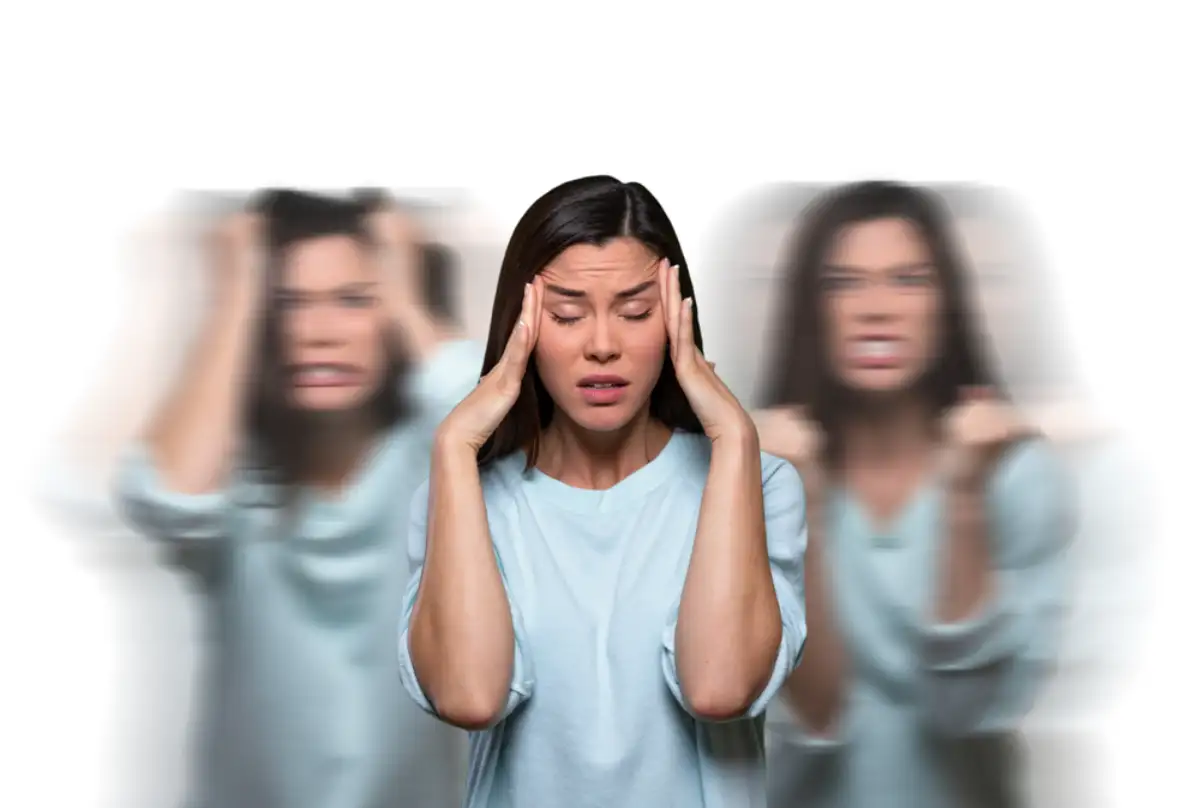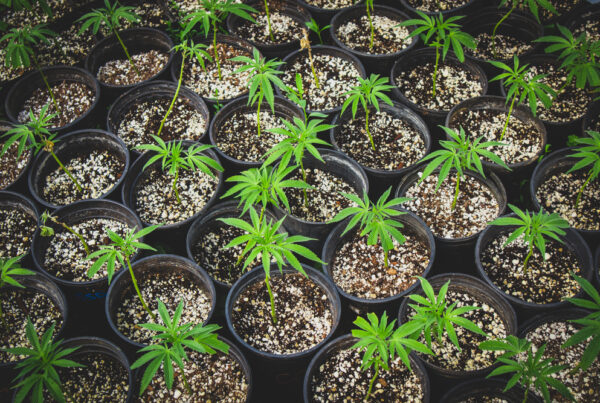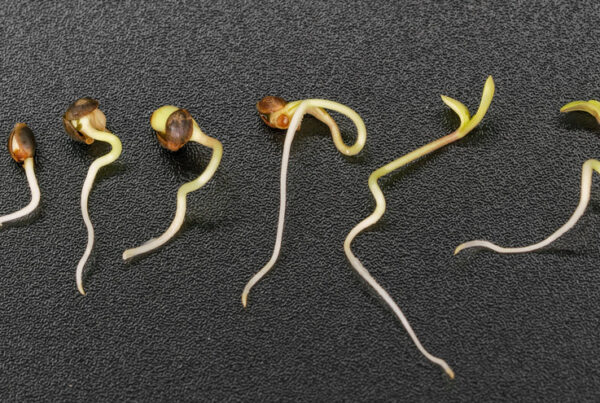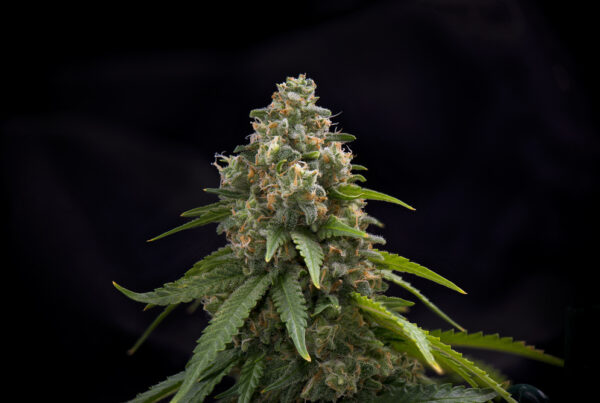Bipolar disorder is a complex mental health condition that affects millions of people worldwide. Characterized by extreme mood swings, including periods of mania and depression, it can significantly impact a person’s daily life and overall well-being. In recent years, there has been growing interest in the potential use of cannabis as a complementary or alternative treatment for bipolar disorder. However, the relationship between bipolar disorder and cannabis usage is still not well understood.
In this blog post, we will delve into the intricacies of bipolar disorder and explore the various aspects of cannabis usage to gain a better understanding of their relationship. We will start by providing an overview of bipolar disorder, including its symptoms, diagnosis, and available treatment options. This will lay the foundation for understanding how cannabis may potentially impact individuals with bipolar disorder.
Next, we will delve into the world of cannabis, examining what it is and the different forms it can take. We will also explore the medical uses of cannabis and the growing body of research that suggests it may have therapeutic benefits for various health conditions, including mental health disorders.
The crux of this blog post will focus on the relationship between bipolar disorder and cannabis usage. We will examine the effects of cannabis on bipolar disorder and discuss scientific studies that have investigated this topic. It is important to note that while some studies suggest a potential positive impact, others have raised concerns about the risks associated with cannabis use, particularly for individuals with bipolar disorder.
Lastly, we will conclude by emphasizing the importance of making informed decisions about bipolar disorder and cannabis use. We will highlight the need for open communication with healthcare professionals, as they can provide guidance on the potential benefits and risks based on individual circumstances. By gaining a comprehensive understanding of the relationship between bipolar disorder and cannabis usage, individuals can make informed choices that prioritize their mental health and overall well-being.

Introduction to Bipolar Disorder and Cannabis
Bipolar disorder, also known as manic-depressive illness, is a mental health condition characterized by extreme shifts in mood, energy levels, and activity levels. Individuals with bipolar disorder experience periods of intense euphoria and elevated mood, known as mania or hypomania, as well as episodes of deep sadness, hopelessness, and low energy, known as depression.
Bipolar disorder affects approximately 2.8% of the adult population in the United States alone, according to the National Institute of Mental Health (NIMH). It can occur at any age but often manifests in late adolescence or early adulthood. The exact cause of bipolar disorder is still unknown, but it is believed to be a combination of genetic, environmental, and neurochemical factors.
The symptoms of bipolar disorder can vary widely, depending on the individual and the specific phase they are experiencing. During manic episodes, individuals may feel excessively energetic, talkative, and have racing thoughts. They may engage in risky behaviors, experience difficulty sleeping, and exhibit a heightened sense of self-importance. On the other hand, during depressive episodes, individuals may feel overwhelming sadness, lose interest in activities they once enjoyed, experience changes in appetite and sleep patterns, and have thoughts of death or suicide.
Treatment for bipolar disorder typically involves a combination of medication, psychotherapy, and lifestyle modifications. Medications such as mood stabilizers, antipsychotics, and antidepressants are commonly prescribed to help manage symptoms and stabilize mood. Psychotherapy, such as cognitive-behavioral therapy (CBT) and interpersonal therapy (IPT), can provide individuals with coping strategies, support, and help them develop healthier thought patterns and behaviors. Additionally, lifestyle changes such as maintaining a regular sleep schedule, engaging in regular exercise, and avoiding substance abuse can also contribute to better management of the disorder.
One substance that has garnered attention in recent years in relation to bipolar disorder is cannabis. Cannabis, also known as marijuana, is a plant that contains numerous chemical compounds called cannabinoids. The two most well-known cannabinoids are delta-9-tetrahydrocannabinol (THC) and cannabidiol (CBD). THC is responsible for the psychoactive effects of cannabis, while CBD is non-psychoactive and has been studied for its potential therapeutic properties.
The use of cannabis for medicinal purposes has gained traction in various countries and states, with its potential benefits being explored for a range of conditions, including chronic pain, epilepsy, multiple sclerosis, and certain mental health disorders. However, when it comes to bipolar disorder, the relationship between cannabis usage and symptom management is still not fully understood.
In the next sections of this blog post, we will delve deeper into the specifics of bipolar disorder and cannabis usage. We will explore the symptoms, diagnosis, and treatment options for bipolar disorder, as well as provide an overview of cannabis, its different forms, and its medical uses. By gaining a comprehensive understanding of both bipolar disorder and cannabis, we can begin to unravel the complexities of their relationship and make more informed decisions regarding their use in managing bipolar disorder symptoms.
What is Bipolar Disorder?
Bipolar disorder is a mental health condition characterized by extreme shifts in mood, energy levels, and activity levels. These shifts, also known as episodes, can range from intense euphoria and elevated mood (mania or hypomania) to deep sadness, hopelessness, and low energy (depression). These episodes can significantly impact a person’s daily life, relationships, and overall functioning.
It is important to note that bipolar disorder is different from the normal ups and downs that people experience in their daily lives. The mood swings in bipolar disorder are more severe and can last for days, weeks, or even months. The transitions between episodes may occur gradually or suddenly, with varying durations of stability in between.
Understanding Bipolar Disorder
Bipolar disorder is a complex condition that involves multiple factors, including genetic, environmental, and neurochemical influences. While the exact cause is still unknown, research suggests that imbalances in certain neurotransmitters, such as dopamine and serotonin, play a role in the development and progression of the disorder.
There are several types of bipolar disorder, each characterized by the specific pattern and severity of episodes. These include:
- Bipolar I Disorder: Individuals with bipolar I disorder experience manic episodes that last for at least seven days or are severe enough to require immediate hospitalization. Depressive episodes may also occur, lasting for at least two weeks.
- Bipolar II Disorder: This type involves both hypomanic episodes and depressive episodes. Hypomanic episodes are less severe than full-blown manic episodes but still significantly impact a person’s functioning.
- Cyclothymic Disorder: Cyclothymic disorder is characterized by numerous periods of hypomanic and depressive symptoms that do not meet the criteria for a full episode. These symptoms persist for at least two years in adults and one year in children and adolescents.
Symptoms and Diagnosis of Bipolar Disorder
The symptoms of bipolar disorder can vary depending on the type and phase of the episode. Manic episodes are characterized by:
- Increased energy levels and restlessness
- Elevated mood or irritability
- Increased talkativeness and rapid speech
- Racing thoughts and difficulty concentrating
- Decreased need for sleep
- Engaging in risky behaviors, such as excessive spending, reckless driving, or risky sexual encounters
On the other hand, depressive episodes may manifest with:
- Persistent sadness, hopelessness, or emptiness
- Loss of interest or pleasure in activities once enjoyed
- Changes in appetite and weight (either significant weight loss or gain)
- Sleep disturbances (insomnia or excessive sleep)
- Fatigue or loss of energy
- Feelings of worthlessness or excessive guilt
- Difficulty concentrating or making decisions
- Thoughts of death or suicide
To diagnose bipolar disorder, a comprehensive evaluation by a healthcare professional is necessary. This typically involves a thorough assessment of symptoms, medical history, and family history, as well as ruling out other potential causes for the mood disturbances. Mental health questionnaires, mood charts, and interviews may be used to gather information and determine the presence of bipolar disorder.
Treatment Options for Bipolar Disorder
The treatment of bipolar disorder often involves a combination of medication, psychotherapy, and lifestyle modifications. Medications commonly used for bipolar disorder include mood stabilizers, such as lithium or valproate, which help control manic and depressive symptoms. Antipsychotic medications may also be prescribed to manage severe manic episodes or psychotic symptoms. Additionally, antidepressant medications may be used cautiously in conjunction with mood stabilizers to address depressive symptoms.
Psychotherapy, such as cognitive-behavioral therapy (CBT) or interpersonal therapy (IPT), can be beneficial in helping individuals with bipolar disorder understand and manage their symptoms. Therapy can provide support, teach coping strategies, and help individuals identify triggers and develop healthier thought patterns and behaviors.
Lifestyle modifications play a crucial role in managing bipolar disorder. Regular exercise, maintaining a consistent sleep schedule, and avoiding substance abuse can contribute to mood stability and overall well-being. It is essential for individuals with bipolar disorder to establish a treatment plan in collaboration with healthcare professionals to optimize symptom management and improve their quality of life.

Overview of Cannabis
Cannabis, also known as marijuana, is a plant that has been used for various purposes for centuries. It contains more than 100 different chemical compounds, known as cannabinoids, which interact with the body’s endocannabinoid system. The two most well-known cannabinoids are delta-9-tetrahydrocannabinol (THC) and cannabidiol (CBD).
What is Cannabis?
Cannabis is a flowering plant that belongs to the Cannabaceae family. It is native to Central Asia but is now cultivated worldwide for various purposes, including medicinal and recreational use. The plant consists of different parts, including the flowers, leaves, stems, and seeds. The flowers, often referred to as buds, are the most potent part of the plant and are typically used for recreational or medicinal purposes.
Different Forms of Cannabis
Cannabis can be consumed in different forms, each with its own method of ingestion and onset of effects. The most common forms include:
- Smoking: Cannabis can be rolled into a joint or smoked using a pipe or water pipe (bong). When smoked, THC and other cannabinoids are rapidly absorbed into the bloodstream through the lungs, resulting in quick onset of effects.
- Vaporizing: Vaporizers heat the cannabis to a temperature that releases the cannabinoids and other compounds as a vapor, which is then inhaled. This method is considered to be less harmful than smoking, as it eliminates the combustion process.
- Edibles: Cannabis can be infused into various food and beverage products, such as cookies, brownies, gummies, and drinks. When consumed orally, cannabinoids are metabolized by the liver, resulting in a delayed onset of effects, typically taking 30 minutes to 2 hours to feel the full effects.
- Topicals: Cannabis-infused creams, lotions, and balms can be applied topically to provide localized relief for pain or inflammation. These products do not typically produce psychoactive effects, as the cannabinoids do not enter the bloodstream.
Medical Uses of Cannabis
Cannabis has been used for medicinal purposes for thousands of years, with historical records dating back to ancient civilizations. In recent years, there has been a resurgence of interest in the potential therapeutic benefits of cannabis for various health conditions, including chronic pain, epilepsy, multiple sclerosis, and certain mental health disorders.
The cannabinoids found in cannabis interact with the body’s endocannabinoid system, which plays a role in regulating various physiological processes, including mood, pain perception, appetite, and sleep. THC, the psychoactive compound, is known to have pain-relieving and anti-inflammatory properties. CBD, on the other hand, is non-psychoactive and has been studied for its potential therapeutic effects, such as reducing anxiety and improving sleep.
It is important to note that the use of cannabis for medicinal purposes is still a topic of ongoing research and debate. While some studies have shown promising results, others have highlighted potential risks and limitations. The legal status of cannabis also varies from country to country and even within different regions, which can impact access to medical cannabis products.
In the next sections, we will explore the relationship between bipolar disorder and cannabis usage. By understanding the effects of cannabis on bipolar disorder and examining the available scientific studies, we can gain a better understanding of how cannabis may impact individuals with this mental health condition.
The Relationship Between Bipolar Disorder and Cannabis
The relationship between bipolar disorder and cannabis usage is a topic that has garnered significant interest and debate in recent years. While some individuals with bipolar disorder may turn to cannabis as a potential treatment or coping mechanism, it is essential to examine the effects and potential risks associated with its use.
Effects of Cannabis on Bipolar Disorder
- Manic Episodes: Cannabis use has been associated with an increased risk of triggering manic episodes in individuals with bipolar disorder. The psychoactive compound THC can potentially amplify existing manic symptoms, leading to heightened energy levels, racing thoughts, and impulsive behaviors. This can disrupt mood stability and overall functioning.
- Depressive Episodes: On the other hand, some individuals may turn to cannabis during depressive episodes as a means of self-medication. While cannabis may provide temporary relief from depressive symptoms, it is important to note that its long-term effects on depression are still not well understood. Additionally, excessive cannabis use can lead to dependency and worsen depressive symptoms over time.
- Sleep Patterns: Sleep disturbances are common in individuals with bipolar disorder, and cannabis usage can further impact sleep patterns. While some individuals may find that cannabis helps them relax and fall asleep, others may experience disruptions in their sleep cycles, leading to worsened sleep quality and overall mood instability.
- Medication Interactions: Cannabis use can potentially interact with medications commonly prescribed for bipolar disorder, such as mood stabilizers and antipsychotics. These interactions can alter the effectiveness of medications and lead to unpredictable outcomes. It is crucial to consult with a healthcare professional before combining cannabis with any prescribed medications.
Scientific Studies on Bipolar Disorder and Cannabis Usage
The scientific research on the relationship between bipolar disorder and cannabis is still limited and often yields conflicting results. Some studies suggest that cannabis use may exacerbate symptoms and increase the risk of manic episodes, while others propose that certain components of cannabis, such as CBD, may have potential therapeutic benefits.
One study published in the Journal of Affective Disorders found that individuals with bipolar disorder who reported using cannabis had a higher number of manic and depressive episodes compared to those who did not use cannabis. Another study published in the Journal of Clinical Psychiatry found that cannabis use was associated with an earlier age of onset of bipolar disorder symptoms.
However, it is important to note that these studies are observational in nature, meaning they do not establish a cause-and-effect relationship between cannabis usage and bipolar disorder symptoms. Further research, including controlled clinical trials, is necessary to provide more conclusive evidence on the effects of cannabis on bipolar disorder.
Potential Risks and Benefits
When considering the potential risks and benefits of cannabis usage for individuals with bipolar disorder, it is crucial to weigh the individual’s unique circumstances and consult with healthcare professionals. Some potential risks of cannabis use include:
- Increased risk of triggering manic episodes
- Worsened sleep disturbances
- Interactions with prescribed medications
- Dependence and potential addiction
On the other hand, some individuals may report certain benefits from cannabis usage, including:
- Temporary relief from depressive symptoms
- Improved mood regulation
- Potential pain relief for comorbid conditions
However, it is essential to approach these potential benefits with caution and recognize that individual responses to cannabis can vary significantly.
In the next section, we will delve deeper into the scientific research and explore the potential therapeutic properties of cannabis for individuals with bipolar disorder. By examining the evidence, we can better understand the implications and make informed decisions regarding the use of cannabis as a part of bipolar disorder management.
Conclusion: Making Informed Decisions About Bipolar Disorder and Cannabis Use
In conclusion, the relationship between bipolar disorder and cannabis usage is a complex and nuanced topic that requires careful consideration. While some individuals with bipolar disorder may be tempted to turn to cannabis as a potential treatment or coping mechanism, it is important to approach its use with caution and make informed decisions.
Scientific research on the effects of cannabis on bipolar disorder is still limited and often yields conflicting results. While some studies suggest that cannabis use may exacerbate symptoms and increase the risk of manic episodes, others propose potential benefits, such as temporary relief from depressive symptoms. However, it is crucial to note that individual responses to cannabis can vary significantly, and what works for one person may not work for another.
When considering cannabis usage for bipolar disorder, it is vital to involve healthcare professionals in the decision-making process. Open communication with mental health providers can help individuals understand the potential risks and benefits based on their specific circumstances. Healthcare professionals can also provide guidance on potential interactions with prescribed medications and help monitor any changes in symptoms.
It is essential to recognize that managing bipolar disorder involves a comprehensive treatment plan that goes beyond the use of cannabis alone. Medications, psychotherapy, and lifestyle modifications play crucial roles in symptom management and overall well-being. Individuals should prioritize these evidence-based approaches and use cannabis, if at all, as a complementary or alternative treatment under professional guidance.
Furthermore, it is important to consider the legal and regulatory aspects of cannabis use in one’s jurisdiction. The legal status of cannabis varies from country to country and even within different regions, which can impact access to medical cannabis products and the legality of recreational use.
Ultimately, making informed decisions about bipolar disorder and cannabis use requires careful consideration of the individual’s unique circumstances, consultation with healthcare professionals, and an understanding of the current scientific evidence. By prioritizing evidence-based approaches and involving healthcare professionals in the decision-making process, individuals with bipolar disorder can navigate the complexities of cannabis usage in a way that best supports their mental health and overall well-being.






